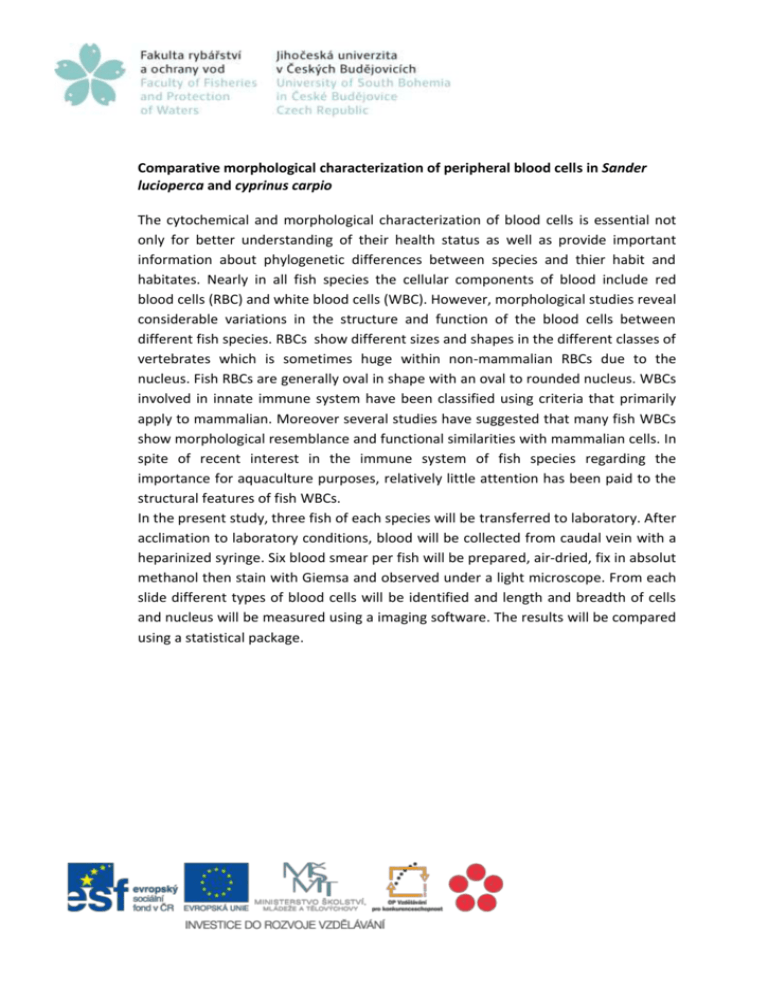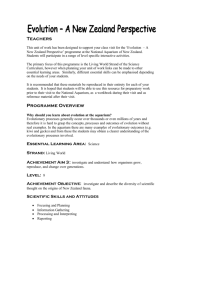Abstract of the project nr. 15
advertisement

Comparative morphological characterization of peripheral blood cells in Sander lucioperca and cyprinus carpio The cytochemical and morphological characterization of blood cells is essential not only for better understanding of their health status as well as provide important information about phylogenetic differences between species and thier habit and habitates. Nearly in all fish species the cellular components of blood include red blood cells (RBC) and white blood cells (WBC). However, morphological studies reveal considerable variations in the structure and function of the blood cells between different fish species. RBCs show different sizes and shapes in the different classes of vertebrates which is sometimes huge within non-mammalian RBCs due to the nucleus. Fish RBCs are generally oval in shape with an oval to rounded nucleus. WBCs involved in innate immune system have been classified using criteria that primarily apply to mammalian. Moreover several studies have suggested that many fish WBCs show morphological resemblance and functional similarities with mammalian cells. In spite of recent interest in the immune system of fish species regarding the importance for aquaculture purposes, relatively little attention has been paid to the structural features of fish WBCs. In the present study, three fish of each species will be transferred to laboratory. After acclimation to laboratory conditions, blood will be collected from caudal vein with a heparinized syringe. Six blood smear per fish will be prepared, air-dried, fix in absolut methanol then stain with Giemsa and observed under a light microscope. From each slide different types of blood cells will be identified and length and breadth of cells and nucleus will be measured using a imaging software. The results will be compared using a statistical package.









